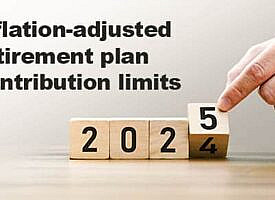By: Jon Schultz and Kimberly Haynes
Colleges, universities, and other higher education institutions have benefited greatly from Higher Education Emergency Relief Fund (HEERF) grants since the beginning of the Covid-19 pandemic. The extra funding has been a crucial support to many schools, but it comes with reporting requirements that have been everchanging and therefore not completely transparent. Here’s where things stand currently for the quarterly and annual reporting requirements.
Quarterly reporting
Recipients of HEERF I, II and III program awards must complete quarterly reporting for both the Institutional and Student portion, but each have different requirements.
Requirements for (a)(1) Student Aid Portion funds
Institutions must post required information every calendar quarter, within 10 days after the end of each quarter. The required information was published in a notice by the Department of Education (ED).
Requirements for (a)(1) Institutional Portion, (a)(2), and (a)(3) funds
Institutions must utilize the Quarterly Budget and Expenditure Reporting form that details their use of (a)(1) monies (the Institutional Portion of grants) as well as (a)(2) and (a)(3) HEERF funding. Grant recipients must report spending for each quarter separately rather than cumulatively.
The U.S. Department of Education (the “ED”) recently clarified certain rules regarding correct formatting for institutional public reporting. The institutional reporting form must be completed no later than 10 days following the last day of the quarter and the update appeared at the end of September 2021, not long before the quarterly reporting deadline of October 10.
This narrow window didn’t lead to problems for most schools, however, because the updated reporting form includes substantially the same information required in earlier iterations. What’s new are some of the rules around how the data is presented and shared:
- Quarterly reporting forms cannot be completed by hand, but must have all data inputted digitally.
- Completed forms must be saved as a PDF and posted on the school’s website for public review without additional information. No scans, photos or other file formats are allowed, nor are additions or attachments to the form.
- Instructions for the form specify that it “must be conspicuously posted on the institution’s primary website on the same page” that the school’s emergency financial aid reporting appears. The instructions further specify the online accessibility of completed reports, saying, “Each quarterly report must be separately maintained in a PDF document linked directly from the IHE’s HEERF reporting webpage.”
- ED encourages institutions to submit quarterly reports to the Department via email (HEERFreporting@ed.gov), sending the new institutional template as well as student quarterly information as PDF attachments.
- The posted forms must adhere to a specific naming convention described in the form’s instructions:
- The required format follows the formula [8-digit OPEID]_[Survey Name]_[Quarter/Year]_[Date of Release]
- The date of release should match the reporting deadline for each quarter (e.g. October 10, 2021, presented as 101021).
- The form instructions offer this example of what the file name should look like when complete: 01177600_HEERF_Q32021_101021.
|
|
|
Annual reporting
ED also released a proposed annual reporting form that requested significant amounts of new information and asked for public comments and feedback on the form. In response, the National Association of College and University Business Officers (NACUBO) and the National Association of Student Financial Aid Administrators (NASFAA) submitted a joint letter communicating multiple concerns and offering ideas for improvement.
The concerns NACUBO and NASFAA described are shared by higher education institutions across the board and reflect substantial potential challenges to compliance.
- The proposed annual reporting form requests demographic data related to student grants that exceeds the data required to maintain legal compliance. This fact could make it quite difficult for institutions to gather and report the requested data accurately. Since HEERF emergency grants to students were often awarded outside of the financial aid system, schools would have to retroactively enter all students who received this type of aid into the system in order to gather the required data, which would demand excessive time and resources.
- Some of the questions regarding HEERF issues that affect students call for subjective responses, which are poorly suited for data reporting as requested on the proposed form. These and certain other requests for student demographic data may not be possible for schools to collect or report accurately (if at all).
- The provisions for reporting lost revenue in the proposed form require institutions to segregate funds into programs of funds and categories that do not match ED’s current lost revenue guidance. Some of the requested data would be functionally impossible to produce.
If enacted in their current form, these requirements could create major headaches that make compliance unlikely (as well as unreasonably difficult). NASFAA and NACUBO offered alternative reporting requirements for some of the content on the proposed form in their response to ED while suggesting that certain items simply be removed from the form.
With the response submitted, it’s a waiting game as HEERF recipients watch to see what the final annual reporting form looks like. For now, these institutions should continue to track and document all HEERF-related spending, pandemic-related expenditures, and lost revenues, and as much student demographic data is reasonably feasible. For help navigating these and all the rest of your thorniest regulatory challenges, contact your Mauldin & Jenkins advisor.
|
|
|


